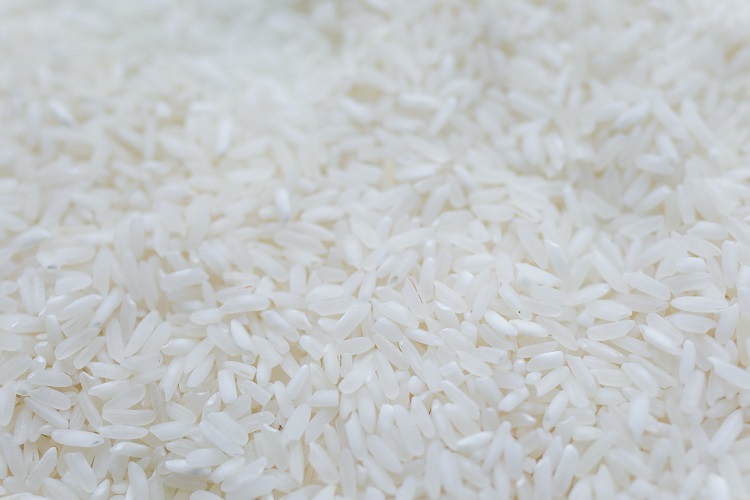But do you know the difference between long-grain, medium-grain, and short-grain rice? Perhaps you wonder what the heck those words on the bag refer to when they say ‘medium’ or ‘long?’ Short. Long grains are less sticky, but higher in calories than medium or short grains. You can use a quick trick to determine whether or not your rice is long grain: if you sprinkle it gently with water and it forms very loose unsealed rings (called ‘rice circles’), then it is long grain. Medium grains form tightly sealed rings while short-grain creates a tight ball whose grains won’t separate from one another even after soaking.
In this article, we will be looking at the reason why you should eat more long-grain rice than other types of rice. These reasons are as follows.
Long grain rice cooks drier and fluffier than other varieties of rice.

Long-grain rice has been a staple for centuries, and for good reason: it’s delicious and easy to cook. Another reason it’s so popular is that it cooks up drier than other types of rice, which means it’s great for serving with sauces or gravies. Long-grain rice also fluffs up more than other types of rice, which makes it perfect for use in side dishes like pilafs or salads—or even as an alternative to pasta!
When you’re cooking long-grain rice, make sure to rinse it before adding it to your pot or pan. By rinsing the starch off the grains before cooking, you’ll reduce clumping during cooking and ensure that each grain remains separate when cooked. You can also rinse your dry uncooked long-grain rice in water before storing it in a sealed container in the refrigerator–this will help keep the grains fresh longer so they don’t get sticky or clumpy over time!
Long grain rice is easier to cook than some other varieties of rice.
Long grain rice is easier to cook than some other varieties of rice. Long grain rice is nice and fluffy, which makes it extra absorbent. This characteristic means you can use less water when cooking as you’re not losing any liquid to evaporation. Furthermore, you should always rinse the grains before cooking them — however, if you have long-grain rice, this step won’t be necessary.
It’s high in fibre and low in calories.

Long grain rice is widely consumed in Nigeria and over the world. It is prepared using many different cooking techniques. Although high in carbohydrates and calories, it is yet considered a rich source of many nutrients like vitamins, minerals, dietary fibre and proteins.
It has a lower glycemic index.
Low-carb diets have become quite popular recently. There are many that follow this lifestyle and also advocate using low-glycemic-index (GI) rice. GI refers to improved blood sugar levels after consuming a meal, with foods having a lower GI considered more beneficial for health. Many long-grain white rice varieties, including Basmati, Jasmine, and Wild are the lowest glycemic rice types available.
Long grain rice has a more delicate texture than other varieties of rice, which makes it a great option for fried or Jollof rice
It’s no secret that long-grain rice is our favourite. But why?
The answer is simple: It has a more delicate texture than other varieties of rice, which makes it a great option for fried or Jollof rice. Long grain rice will retain its shape when cooked, but it also has the ability to absorb liquid and expand—which means that it’ll soak up all of the amazing flavours in your recipe and make them even better.
It’s also great to use in salads because it won’t get soggy like other types of rice
Long grain rice tastes less sticky than other types of rice.
Long grain rice is a staple in many households, and for good reason. It’s easy to cook, it’s delicious, and it’s versatile. But why does long-grain tasteless as sticky as other types of rice?
It all comes down to the shape of the grains. Long grain rice has long, slender grains that are easy to separate from one another during cooking. That makes it easier to eat without getting a mouthful of grits or clumps. Long grain rice pairs well with a variety of flavours, so it’s great in recipes with rich sauces or lots of vegetables.
Long grain rice takes longer for the grains to become overcooked. So if you’re looking for something more hearty but still want to avoid the stickiness that comes with most other types of rice, then long-grain might be your best bet!
Long grain rice is better than and should be used more often than other varieties of rice.
Long-grain rice is better than other varieties of rice because it has a higher nutritional value and is easier to digest. It also has a milder flavour than other types of rice, which makes it a good choice for adding to a variety of dishes.
Long-grain rice is also more nutritious than other types of rice, such as short-grain or medium-grain. This is because long-grain rice contains more vitamins and minerals per serving than the other varieties. It also contains thiamine, niacin, iron, potassium, magnesium and fibre.
Long grain rice is also better for you because it is easier to digest than short or medium grain varieties. This means that it will not cause bloating or gas like some other types of rice do.

To sum it up, this was mainly in order to let Nigerians know the importance of long grain rice and the role it plays in our bodies. The main reason why we eat rice is to improve our health and make us stronger with time. Even though they are much better than other foods, it is important to add vegetables to your meals so that you can also gain enough nutrients around the year.
We hope you enjoyed this article on why long-grain rice is better than other types of rice.
If you have any questions about this topic, or if there’s a topic you’d like us to cover, please leave a comment below or send us a message through our contact page.
We also invite you to sign up for our newsletter so that we can let you know when we publish new content so that you don’t miss out on anything!


